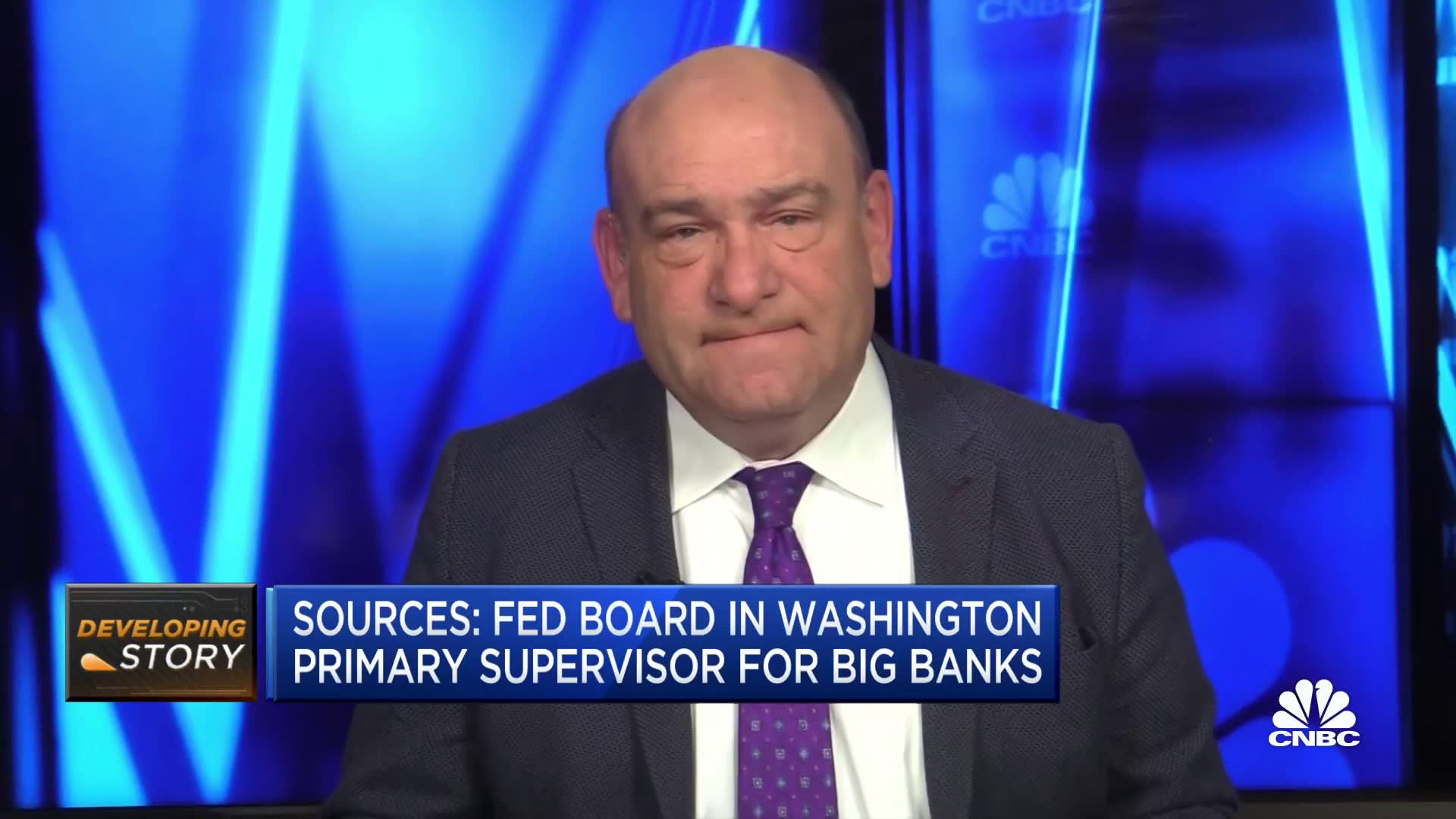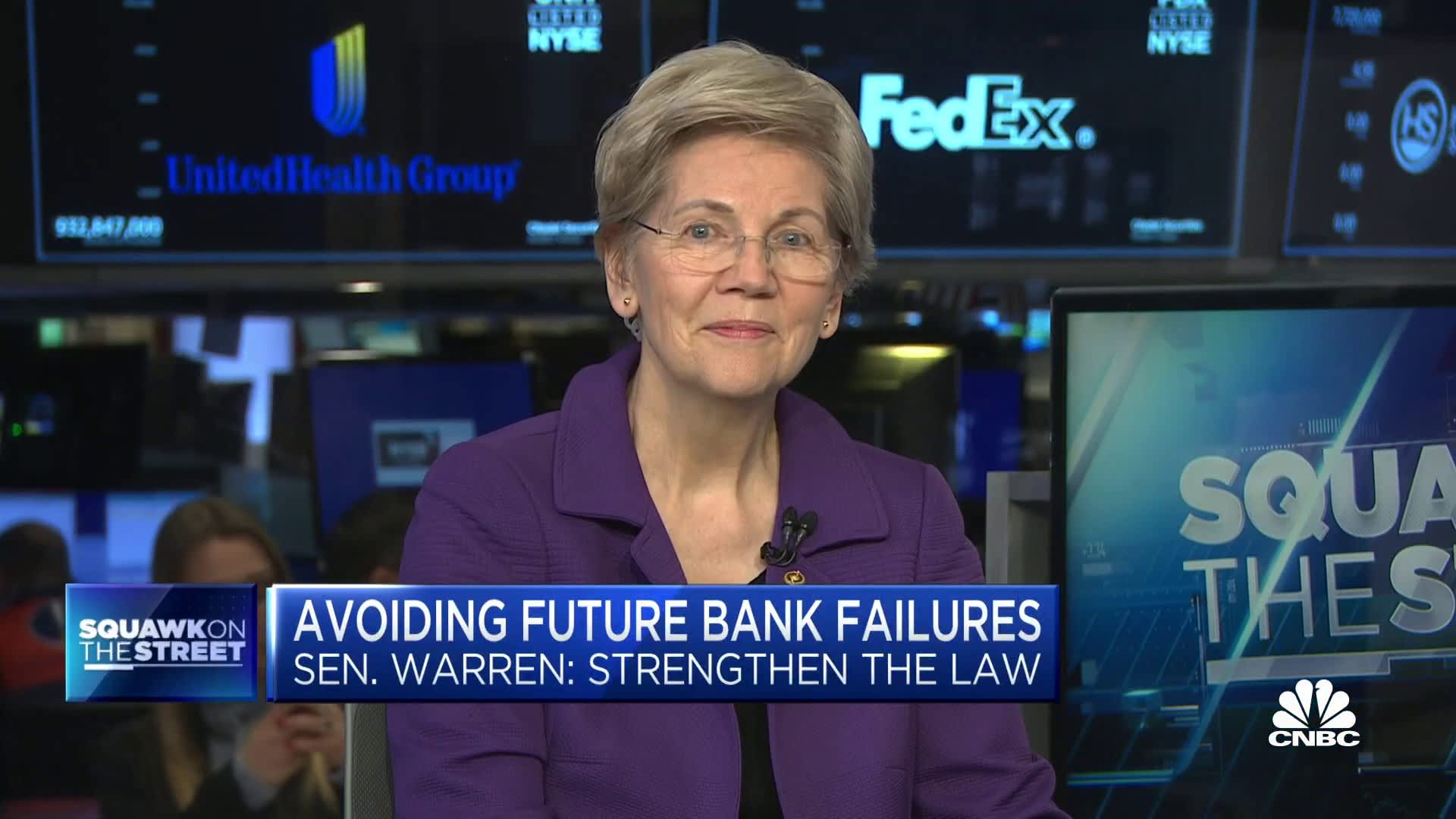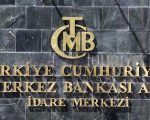
San Francisco Fed President Mary Daly, whose district saw the second-largest bank failure in U.S. history and who has become a target of criticism, would not have typically been a key player in Silicon Valley Bank’s supervision, several former and current Fed officials told CNBC.
A highly centralized design to the Fed’s oversight of large banks such as SVB with assets over $100 billion put supervision under the staff and leadership of the Federal Reserve Board of Governors in Washington.
Regional Fed presidents can be more or less involved in monitoring their biggest banks, these officials said, but the key decisions about policy and enforcement would have been taken in Washington, not by Daly.
“She was not in the chain of command,” one former Fed bank president told CNBC. “Supervisory action taken by the San Francisco Fed staff would have been cleared by Washington.”
Daly and Fed board officials declined to comment for this report. The officials who spoke to CNBC requested anonymity so they could speak candidly on the issue.
Washington takes the lead
Regional bank presidents and the supervisory staff directly supervise smaller community banks with assets under $100 billion.
But while the examiners for big banks who work in the regional offices are hired and can be fired by the regional bank presidents, the bulk of their reporting is overseen by the board in Washington.
The failure of SVB earlier in March sent shock waves through the banking industry and ignited fears of bank runs on mid- and small-size banks.
Data shows hundreds of billions of dollars have poured out of smaller banks, with some going to larger banks, and hundreds of billions of dollars more leaving the banking system and ending up in money market mutual funds.
It raised significant questions about the Fed’s bank supervision and its failure to act more forcefully on problems it had previously identified, including a concentrated deposit base and poorly managed interest rate duration risk.
The House and Senate both held hearings this week on the matter, with Republicans accusing Daly and the San Francisco bank of focusing more on the risk of climate change than financial risk.
“The San Francisco Fed was focused on researching left-wing policies that they had absolutely no expertise in, ignoring one of the most basic risks in banking-interest rate risks,” said Tennessee Republican Sen. Bill Hagerty.
Talk, but no action
For a bank such as SVB, local examiners are charged with making day-to-day decisions based on a supervisory framework set out by the Fed Board of Governors and consult with board staff on consequential decisions.
SVB experienced massive growth in 2020 and 2021 and moved into the category of Large Bank Organizations, where the bulk of the supervision was handled by examiners in the San Francisco Fed who reported mostly to Washington.
San Francisco Federal Reserve President Mary Daly reacts at the Los Angeles World Affairs Council Town Hall, Los Angeles, California, U.S., October 15, 2019.
Ann Saphir | Reuters
One former Fed official said Washington sets the strike zone for banks by setting policy, and local examiners figure out whether the bank is meeting those policy requirements.
In the case of SVB, supervisors issued seven Matters Requiring Attention or Matters Requiring Immediate Attention in regard to its liquidity and interest-rate risk.
Officials said these MRA or MRIAs would have been approved by Washington. In the summer of 2022, the bank’s rating was lowered to “fair” and its governance rated as “deficient.”
The bank was said to be not well-managed and it was subjected to growth restrictions. It’s unknown whether examiners pushed Washington for harsher action.
But regulators did not take more severe steps available to them, including fines, cease-and-desist orders or enforcement actions, which would have been public.
Conflict of interest
Former Fed officials interviewed by CNBC said they had experienced instances of frustration when they pushed Washington to act faster or more forcefully in regard to a bank but their complaints had little impact.
It is not known if Daly urged Washington to take any action.
The president of SVB sat on the board of directors of the San Francisco Fed, and one Fed official said regional Fed presidents are prohibited from involvement with supervision regarding members of their board.
However, if the case was severe, Daly could have asked the SVB executive to resign from the board, one former official said.
The failure of SVB raises significant questions about the Fed’s supervisory structure: Should more authority be delegated to regional presidents? Does the Fed at its highest levels place enough priority on supervision compared to monetary policy?
One former official told CNBC that Daly is unlikely to emerge blameless in the ongoing review.
But the official said there’s no way to say she was making the most important decisions surrounding the bank’s failure. A review of what went wrong will likely point more heavily to Washington, its supervisory bureaucracy and the board leadership than to San Francisco.

Clarification: An earlier version of this story quoted Fed Vice Chair of Supervision Michael Barr saying examiners called out issues with the bank to the “board.” Barr was referring to the SVB board of directors, which was unclear on the reference.








